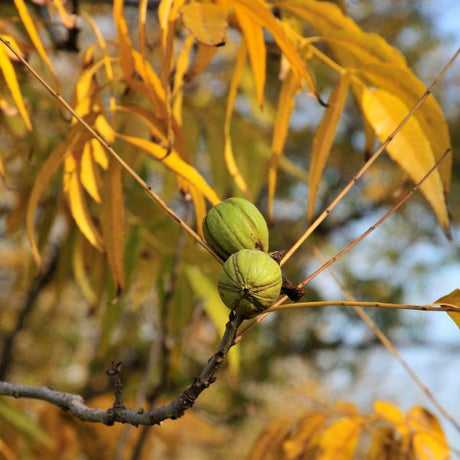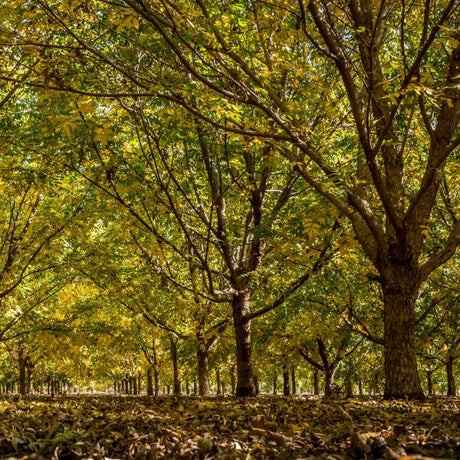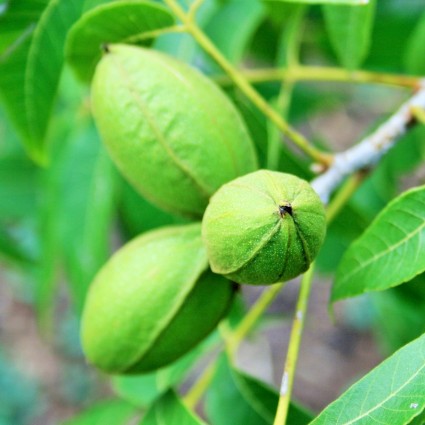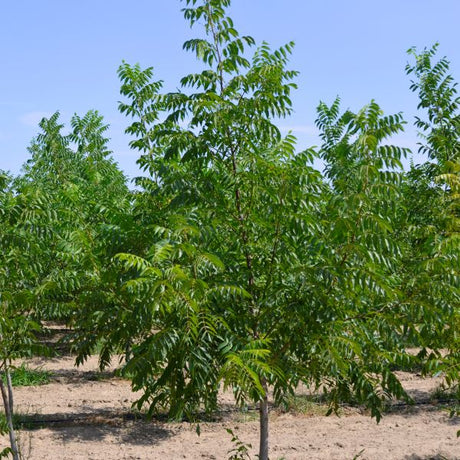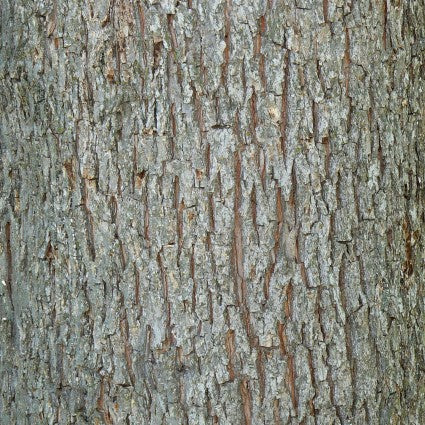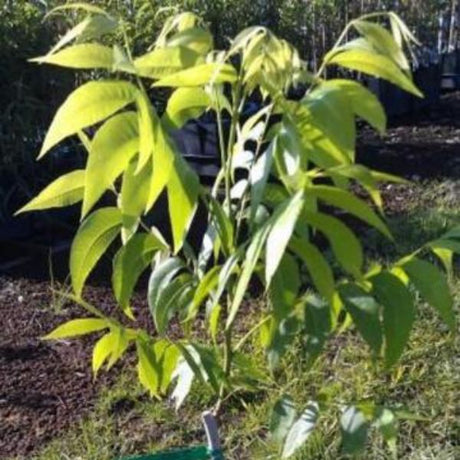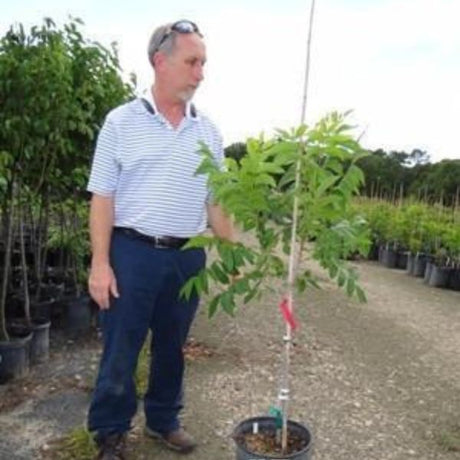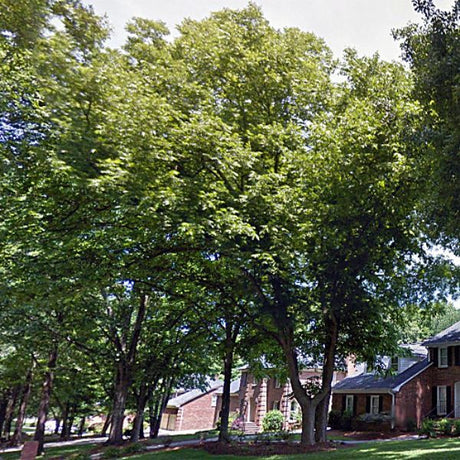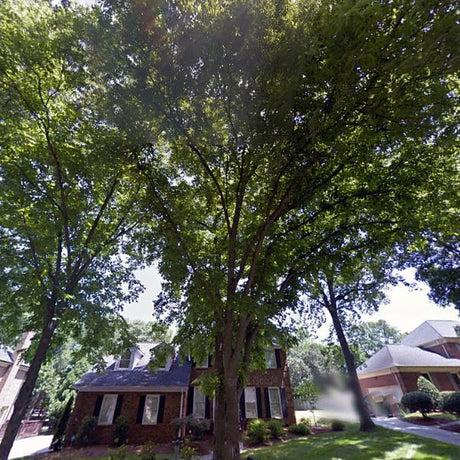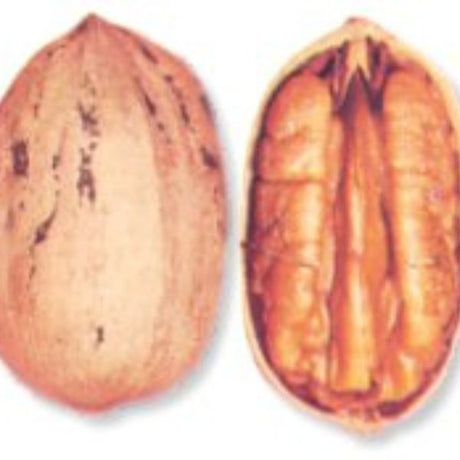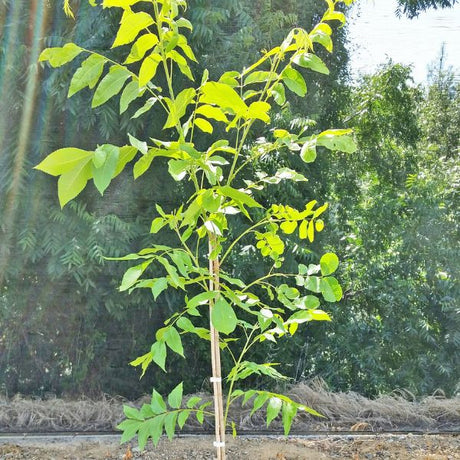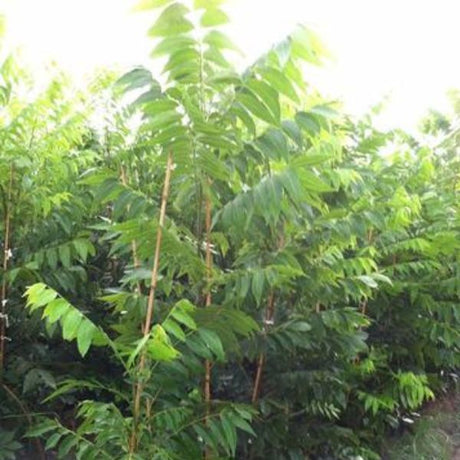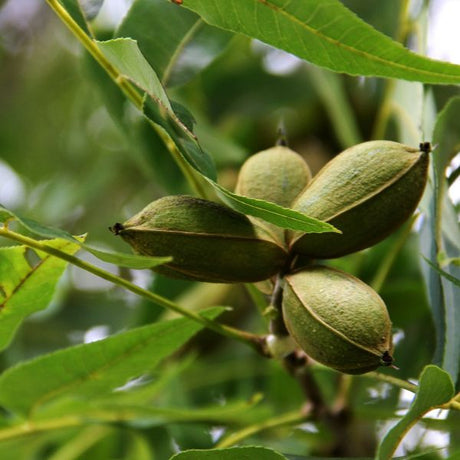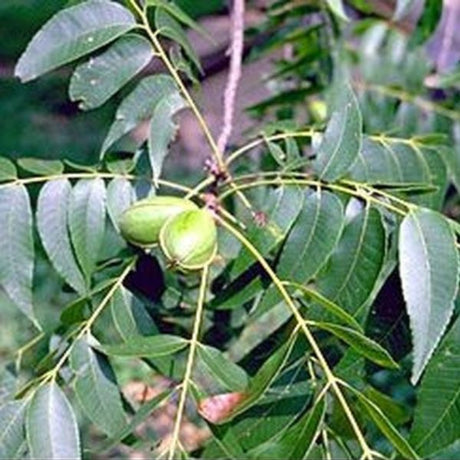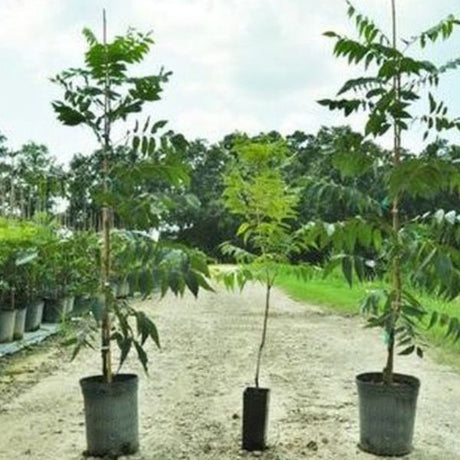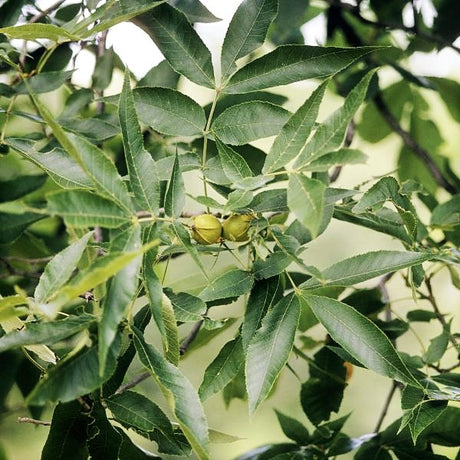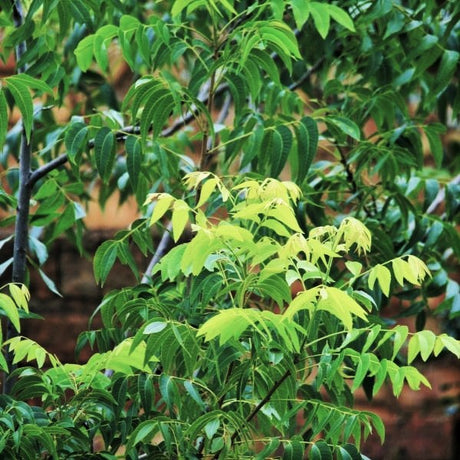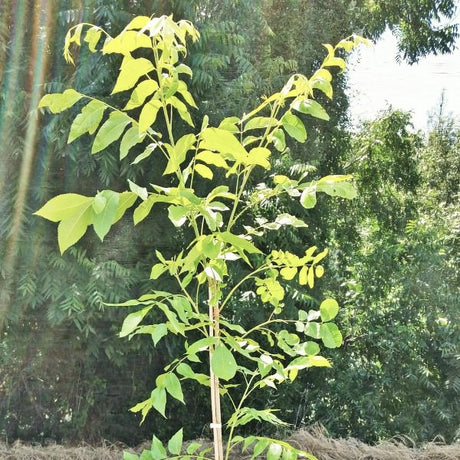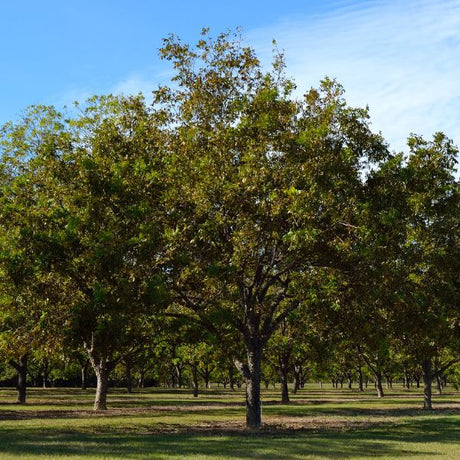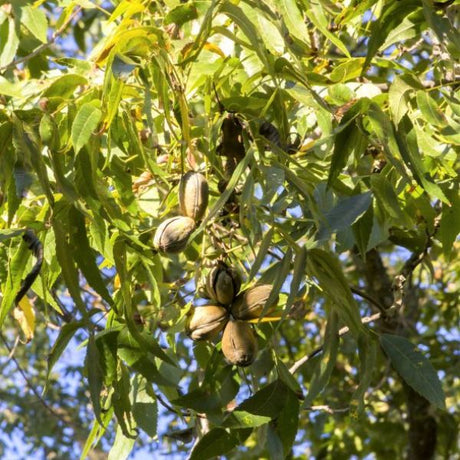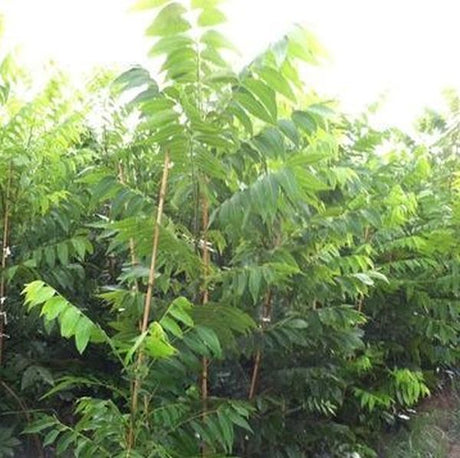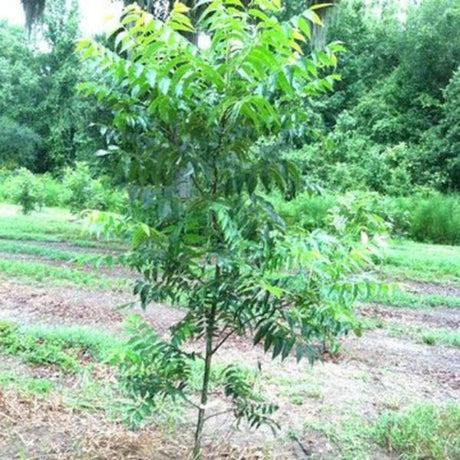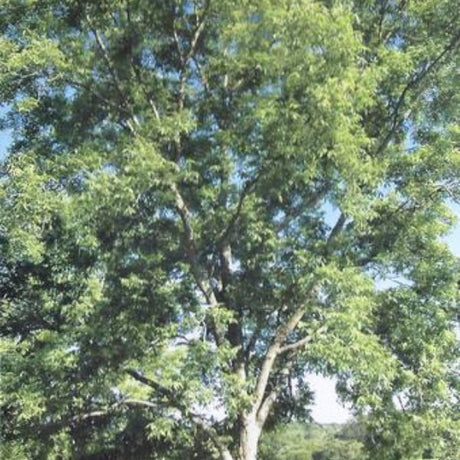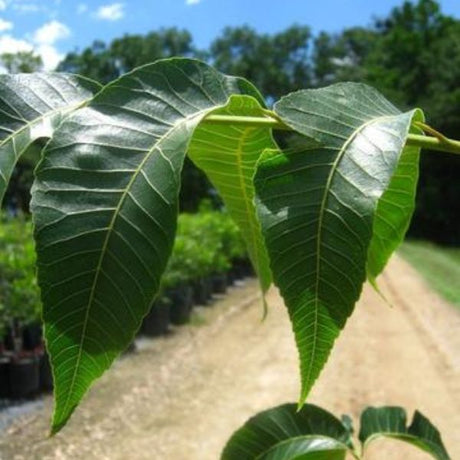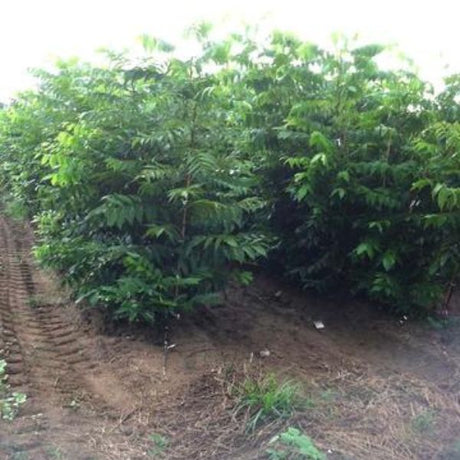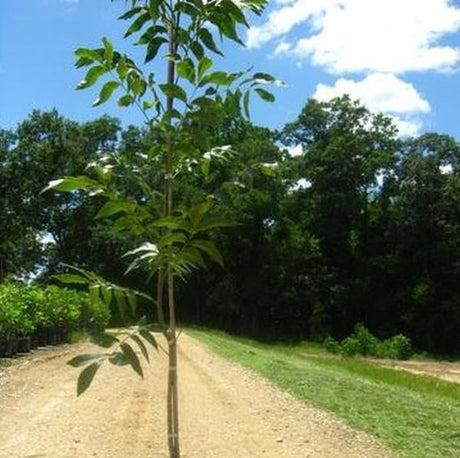- Sold out
- Sold out
- Sold out
- Sold out
- Sold out
Carya illinoensis 'Desirable'
Regular price From $14984Unit price /Unavailable - Sold out
- Sold out
Pecan Trees For Sale at Nature Hills Nursery
Pecan trees (Carya illinoinensis) are classic American nut trees. Native to the southern United States, they provide delicious nuts, dense shade, and strong landscape presence.
Maybe you've loved pecan pie your whole life. Why not grow your own Candy Pecan tree populations for fresh baking ingredients? That way, you get to enjoy homegrown nuts as well as a terrific shade tree.
Perhaps you have some sun and open ground on your property and want to get into Pecan farming as a hobby or enterprise. Growing Pecan trees is a great idea. Our farmers produce roughly 80% of the world's annual consumption, according to the U.S. Pecan Growers Council.
You’ll find high-quality Pecan trees for sale at Nature Hills Nursery, ready to thrive in your yard or orchard.
Why Grow Pecans?

-
Shade and beauty with wide, spreading canopies
-
Nut production for decades: mature trees can yield up to 150 pounds per year
- Long-lived and hardy, with some living over 300 years
- Grow well in USDA Zones 6–9 (Hardy Pecan extends into Zone 5a)
Pollination Basics
Pecans need more than one tree for nut production. They are not self-pollinating. You need more than one tree to ensure cross-pollination and a great harvest.
-
Type 1 trees release pollen before female flowers are ready
-
Type 2 trees release pollen after female flowers are receptive
- Plant at least one of each type within 80 feet for reliable harvests
Popular Pecan Varieties At Nature Hills
In addition, each of these named cultivars produces different kinds of pecans for eating fresh, cooking, baking, and shipping.
-
Candy Pecan: Sweet nuts, great for baking
-
Elliot Pecan: Rich flavor, dependable harvests
-
Pawnee Pecan: Compact size for smaller lots
-
Choctaw Pecan: Thin shell, excellent pollinator
-
Hardy Pecan: Best for northern growers
Pecan Tree Care Tips
Remember that large taproot! We carefully balance the size of the root ball and its success in transplanting.
- Choose a sunny site with good air circulation
- Provide room to spread, as Pecans grow large
- Be patient! Trees start producing at the age of 6–10 years, but last for generations
These are the perfect plants to make the most of your sunshine and space. Whether you are looking for cold-hardy Wisconsin Pecan trees for sale, or to buy Pecan trees for Georgia or Arizona climates, Nature Hills Nursery helps you make it happen.
Bring home the beauty and productivity of Pecan trees today. Shop our full collection and enjoy fresh, homegrown Pecans for years to come!
FAQ's for Buying Pecan Tree Online
Do you need two pecan trees to get nuts?
Do you need two pecan trees to get nuts?
Yes, pecan trees require cross-pollination between two different types—Type 1 and Type 2—for optimal nut production. Although pecans have both male and female flowers on the same tree, they release pollen at different times. Planting one of each type within 80 feet ensures successful pollination and consistent harvests.
How long does it take a pecan tree to bear fruit?
How long does it take a pecan tree to bear fruit?
Pecan trees generally begin producing nuts between 6 and 10 years after planting. Grafted varieties, especially those sold by Nature Hills Nursery, may bear earlier and more consistently. With the right care, mature trees can produce 70–150 pounds of pecans per season.
What is the best variety of pecan tree for home gardeners?
What is the best variety of pecan tree for home gardeners?
The best pecan tree variety depends on your region and purpose. For compact landscapes, the Type 1 Pawnee Pecan offers smaller size with great nut production. For flavor, Type 2 Elliot Pecan is a top pick, known for its rich taste and reliable yields. Cold-climate gardeners should consider the Hardy Pecan tree, suitable for Zone 5a.
Can pecan trees grow in cold climates?
Can pecan trees grow in cold climates?
While pecan trees prefer USDA zones 6–9, the Hardy Pecan tree can grow in colder regions like Zone 5a. Choosing cold-hardy grafted cultivars increases success in northern climates. Ensure your tree is planted in full sun with good air circulation for best results.
How should I plant and care for a pecan tree?
How should I plant and care for a pecan tree?
Plant pecan trees in full sun, at least 40–80 feet apart depending on the variety. Use well-drained soil and dig a hole twice as wide as the root ball. Apply mulch and water regularly during the first growing season. Annual pruning, fertilizing, and proper pollination are essential for healthy growth and nut production.

